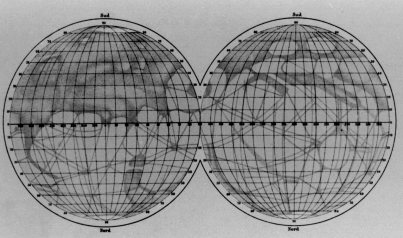So far we've discussed our options for permanent human colonies within the solar system, and we've examined the current state of interstellar travel and the stars we can reasonably hope reach within a human lifetime. Our search for a home outside of the solar system has been narrowed, essentially, to Alpha Centauri. We have established the possibility (without assigning probability) of habitable worlds there.
We have the technology, right now, to launch a colonial expedition to Alpha Centauri. But we cannot in good conscience do so until we have some idea that they will find a suitable world once they get there.
Our parameters for what constitutes a "suitable world" narrow considerably when we are talking about an 88 year one-way trip.
The world must be well within the habitable zone of the star, and there should be plenty of liquid water on the surface. The size and gravity of the planet should be very similar to earth's. The atmosphere should be dense enough for a person to be able to walk around in it without protection. The atmosphere should not be corrosive or toxic. A person should be able to walk around comfortably wearing no more equipment than a respirator and an oxygen source.
The atmosphere should not, however, contain oxygen. Because oxygen would mean that the planet had already been colonized.
The bottom line is this. Any conceivable candidate for human settlement around the stars of Alpha Centauri needs to be a helluva lot more hospitable than Mars. Because Mars is much, much closer.
The good news is that we currently have the technology, and soon will have the ability, to determine if any earth-sized planets exist within the habitable zones of Alpha Centauri. The NASA mission (SIM, the Space Interferometry Mission) to do so was officially defunded in 2010, so it will be up to other countries or private interests to continue this research. Hopefully Europe, India, Russia or China will take the lead in the Space Race and keep the ball rolling. The United States, unfortunately, seems to have thrown in the towel. But this is a venture "for all mankind", so it really doesn't matter who does the work, so long as the work gets done.
If earth-sized planets are found within any of the habitable zones of Alpha Centauri, the next step is to determine, from here, what the atmospheric composition and hydrography of the world is, and generally learn as much as we can from earth or earth-orbit before beginning the process of sending people there. Amazingly enough, it is probably possible, right now, to build a space-hypertelescope which would give us as much information about a planet around Alpha Centauri as Giovanni Schiaparelli's telescope gave him about Mars.
The telescope is currently called the Exo-Earth Imager (EEI). It consists of multiple orbital mirrors focused into a single telescope, and could presumably be improved upon once it was operational by adding more mirrors. From 10 light years away (more than twice the distance to Alpha Centauri), earth would look like this:
From such imagery we could make some pretty good assumptions about a planet. Or, like Schiaparelli and Percival Lowell, we could make some really bad assumptions. But it's a starting place.


No comments:
Post a Comment